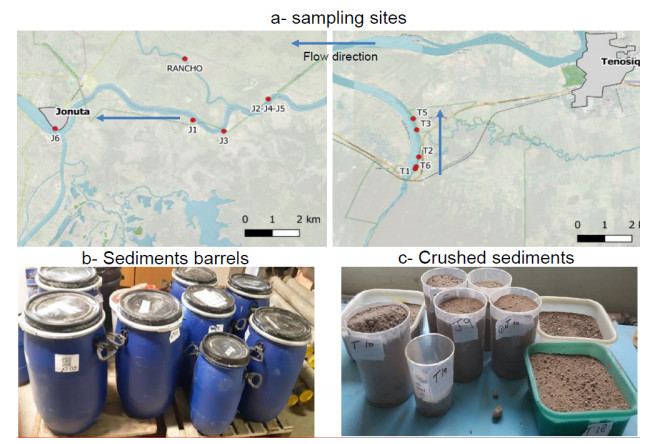1.
Introduction
The author of this study, given Ω∈RN(N≥2), a bounded regular domain with Lipschitz boundary and ΩT=[0,T]×Ω, considers a kind of variation-inequality problem
with the non-Newtonian polytropic operator
Here, u0∈H10(Ω), f, h, and α have been used with different conditions in Sections 3 and 4, as specified in Theorem 3.1 and Theorem 4.1.
Variational inequalities, such as problem (1.1), have found widespread application in the field of finance. For example, [1] explores the investment-consumption model, while [2] analyzes dividend optimization and risk control problems through weak solutions of variation-inequality. In [3], a continuous-time, finite horizon, irreversible investment problem is examined, resulting in the emergence of a free boundary that represents the optimal investment boundary.
The behaviours of the free boundary and existence of a weak solution were studied by using the partial differential equation (PDE) approach. Moreover, the regularities of the value function and optimal investment and maintenance policies were considered in [4].
In recent years, there have been much literature on the theoretical research of variation-inequality problems.The authors in [5] studied the following variation-inequality initial-boundary value problems:
with fourth-order p-Laplacian Kirchhoff operators,
The existence, stability and uniqueness of solutions are mainly obtained using the Leray Schauder principle. Moreover, Li and Bi in [6] considered the two-dimensional case in [5]. The conditions to ensure the existence of weak solutions are given in [7]. The existence results of weak solutions of variational inequalities can also be found in [8,9,10,11]. For the uniqueness of weak solutions of variational inequalities, refer to [9,10,11,12]. In addition, the results about the stability of weak solutions on initial values are also worth studying [13]. At present, there are few studies on the regularity of solutions of variation-inequality problems.
In this paper, we study the regularity and blow-up of weak solutions of variational inequalities (1.1). First, we assume that f≥0 and h≥0 for any (x,t)∈ΩT, u0∈H10(Ω), um∈L(0,T;H2(Ω)) and f∈L(0,T;L2(Ω)). The weak solution equation is transformed into a difference equation by using the difference operator. Under the property of the difference operator, the L(0,T;H3(Ω′)) estimation inequality is obtained, which is the regularity of the weak solution. Second, we consider the blowup of weak solutions with the restriction that f<0 for any (x,t)∈ΩT, h is a negative constant and α>1. After defining the energy function E(t), it is proved that the weak solution will blow up in finite time by using Hölder inequality and differential transformation techniques.
2.
Statement of the problem and its background
We first give an application of variational inequality in investment and consumption theory. In order to fit optimally the random demand of a good, a social planner needs to control its capacity production at time interval [0,T]. Let {Dt,t∈[0,T]} be the random demand of a good
where μ1 and σ1 are the expected rate of return and volatility respectively. Further, process {Ct,t∈[0,T]} is the production capacity of the firm,
Here μ2 and σ2 are the expected rate of return and volatility of the production process.
A planner is able to create a production plan Ct at any point in time between 0 and T to equilibrate uncertain demand Dt. As such, the planner can use a value function V to determine an optimal policy that minimizes the anticipated total cost within a finite timeframe. According to literature [1,2,3], the value function V satisfies
where L1V is a two-dimensional parabolic operator with constant parameters,
Here, r represents the risk-free interest rate of the bank. The cost function,
is designed to represent the potential expense associated with storing goods, where p1 and p2 indicate the per unit costs of having excessive supply and demand, respectively.
If transportation loss and storage costs are taken into account, sigma is dependent on ∂cV, ∂dV, and V itself. This is illustrated by the well-known Leland model, which expresses σ1 and σ2 as
where m>0, i=1,2, σ0,1 and σ0,2 represent the original volatility of Ct and Dt, respectively, and Le is the Leland number.
When studying variation-inequality problems, this paper considers cases that are more complex than the example given in Eq 2.2. To do this, we introduce a set of maximal monotone maps that have been defined in previous works [1,2,3,5,6],
where M0 is a positive constant.
Definition 2.1. A pair (u,ξ) is said to be a generalized solution of variation-inequality (1.1), if (u,ξ) satisfies u∈L∞(0,T,H1(Ω)),∂tu∈L∞(0,T,L2(Ω)) and ξ∈Gforany(x,t)∈ΩT,
(a) u(x,t)≥u0(x),u(x,0)=u0(x)forany(x,t)∈ΩT,
(b) for every test-function φ∈C1(ˉΩT), there admits the equality
By a standard energy method, the following existence theorem can be found in [5,6,14,15].
Theorem 2.2. Assume that u0∈H10(Ω), f,h∈L∞(0,T;L2(Ω)), f(x,t)≥0 and h(x,t)≥0 for any (x,t)∈ΩT. If α>0,m>0, then (1) admits a solution u within the class of Definition 2.1.
Note that from (1), it follows that Lu≤0 and L0=0 for any (x,t)∈ΩT. Additionally, we have u0≥0 in Ω, and u=0 on ∂ΩT. Therefore, by the extremum principle [16], we have
One purpose of this paper is the regularity of weak solutions, so we give some functions and their valuable results. Define the difference operator,
where ei is the unit vector in the direction xi. According to literature [14], the difference operator has the following results.
Lemma 2.3. (1) Let Δi∗Δx=−Δi−Δx be the conjugate operator of ΔiΔx, then we have
in other words, ∫Rnf(x)ΔiΔxg(x)dx=∫Rng(x)Δi∗Δxf(x)dx.
(2) Operator ΔiΔx has the following commutative results
(3) If u∈W1,p(Ω), for any Ω′⊂⊂Ω,
(4) Assuming u∈Lp(Ω) with p≥2, if h is sufficiently small such that ∫Ω|Δihu|pdx≤C, where C is independent of h, then we have
3.
Regularity of solution
This section considers the regularity of weak solutions. Select the sub-region Ω′⊂⊂Ω, define d=dist(Ω′,Ω) and let η∈C∞0(Ω) be the cutoff factor of Ω′ in Ω, such that
Let Δx<d, define φ=Δi∗Δx(η2ΔiΔxu), and note that u∈H10(Ω), then substituting φ=Δi∗Δx(η2ΔiΔxu) into the weak solution equation gives
Now we pay attention to ∫Ω′∂tuΔi∗Δx(η2ΔiΔxu)dx. Using differential transformation techniques,
Substitute (3.2) into (3.1), so that
Here we use the commutativity of conjugate operator Δi∗Δx in ∫∫Ω′TΔumΔΔi∗Δx(η2ΔiΔxu)dxdt. Further using the differential technique to expand ΔΔihumΔ(η2Δihu), one can get
Combining formula (3.3) and (3.4), it is easy to verify that
By Hölder and Young inequalities,
Applying Hölder and Young inequalities again and combining with (3.1),
Substituting (3.6)-(3.9) to (3.5), it is clear to verify
Rearranging the above formula, such that
Using the relationship between difference and partial derivative,
Therefore,
Recall that sub-area Ω′ belongs to Ω. It follows from (4) of Lemma 2.3 that
If α≤1, using Hölder inequality gives
Theorem 3.1. Assume f≥0 and h≥0 for any (x,t)∈ΩT. If u0∈H1(Ω), um∈L(0,T;H2(Ω)) and f∈L(0,T;L2(Ω)), then for any sub-area Ω′⊂⊂Ω, there holds u∈L(0,T;H3(Ω′)), and estimate (3.10). Moreover, if α≤1, (3.11) follows.
Using the finite cover principle and the flattening operator [14], we have the following global regularity result.
Theorem 3.2. Let f≥0 and h≥0 for any (x,t)∈ΩT. If u0∈H1(Ω), um∈L(0,T;H2(Ω)) and f∈L(0,T;L2(Ω)), then
If α≤1, we have
4.
Blowup of solution
This section discusses the blow-up properties of weak solutions to the variation-inequality problem (1.1), under the constraints that α≤1, f<0, and h<0. As u>0 in ΩT, we define the function
for this purpose. Choosing the test function φ=umum+ε in weak equation, we have
It follows from u∈L∞(0,T,H2(Ω)),∂tu∈L2(ΩT) and f∈L(0,T;L2(Ω)) that
Recall that um≥0 and ξ≥0 for any (x,t)∈ΩT. In this section we consider the case that f≤0 for any (x,t)∈ΩT and h is a negative constant, so
Substituting (4.2)-(4.5) to (4.1), one can have
Using Hölder inequality (here, we used the conditions α>1 and h<0),
such that combining (4.6) and (4.7) gives
Applying variable separation techniques to above equation, and then integrating from 0 to T gives
Rearranging (4.9), one can get
Note that α<1 and h<0. As t approaches 1(α−1)h−1|Ω|α−1E(0)1−α, E(t) tends to infinity. This indicates that the weak solution of the equation will experience a finite-time blow up at T∗, and T∗ satisfies
Further, we analyze the rate of Blowup. Integrating the value of (4.8) from t to T∗ gives
which (note that E(T∗)1−α=0) implies that
Rearranging (4.12), it is easy to see that
Theorem 4.1. Assume that f<0 for any (x,t)∈ΩT and h is a negative constant. If α>1, then the weak solution (u,ξ) of variation-inequality problem (1) at time T∗ in which T∗ is bounded by (4.13). Moreover, the rate of blowup is given by
where C=(α−1)11−α|h|11−α|Ω|.
5.
Conclusions
This article investigates the global regularity and blow-up of weak solutions for the following variational inequality (1.1) with the non-Newtonian polytropic operator
Firstly, this article analyzes the H3(Ω) regularity of weak solutions for variational inequality (1.1). We assume that f≥0 and h≥0 for any (x,t)∈ΩT, u0∈H10(Ω), um∈L(0,T;H2(Ω)) and f∈L(0,T;L2(Ω)). Since using ∂xxu as test function does not comply with the definition of weak solution, this article introduces spatial difference operator and constructs test functions with it to approximate the second-order spatial gradient of u. Additionally, with the aid of spatial cutoff factor, Hölder's inequality and Young's inequality, two H3(Ω) regularity estimates for weak solutions of variational inequality (1.1) are obtained. The specific results can be seen in Theorem 3.1 and Theorem 3.2.
Secondly, we analyze the blow-up properties of weak solutions for variational inequality (1.1) within a finite time under the assumption that f<0 for any (x,t)∈ΩT, h is a negative constant and α≤1. Considering that u is non-negative, we define an energy function
and obtain the differential inequality of the energy function, as shown in (4.8). By using differential transform techniques, we obtain the lower bound of the blow-up point and the blow-up rate. The results are presented in Theorem 4.1.
Currently, there are still some limitations in this article: (1) Equations (4.6) and (4.10) can only hold when h is a non-negative parameter; (2) Equations (4.10)-(4.13) can only hold when α≤1. In future research, we will attempt to overcome these limitations.
Use of AI tools declaration
The authors declare they have not used Artificial Intelligence (AI) tools in the creation of this article.
Acknowledgments
The authors are grateful to the anonymous referees for their valuable comments and suggestions.
Conflict of interest
The authors declare that he has no conflict of interest.



















 DownLoad:
DownLoad: